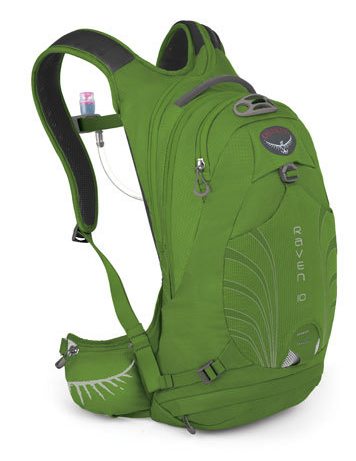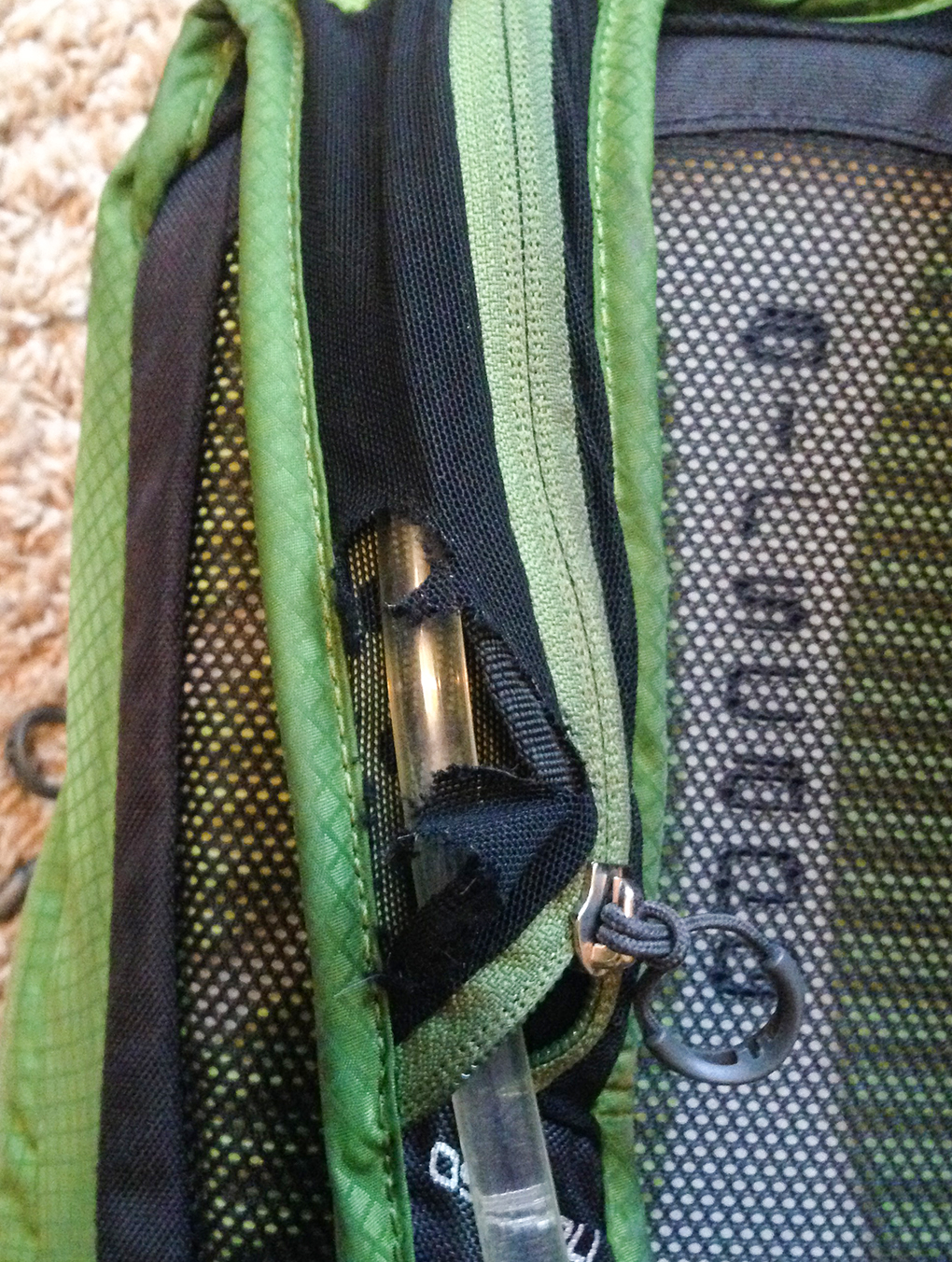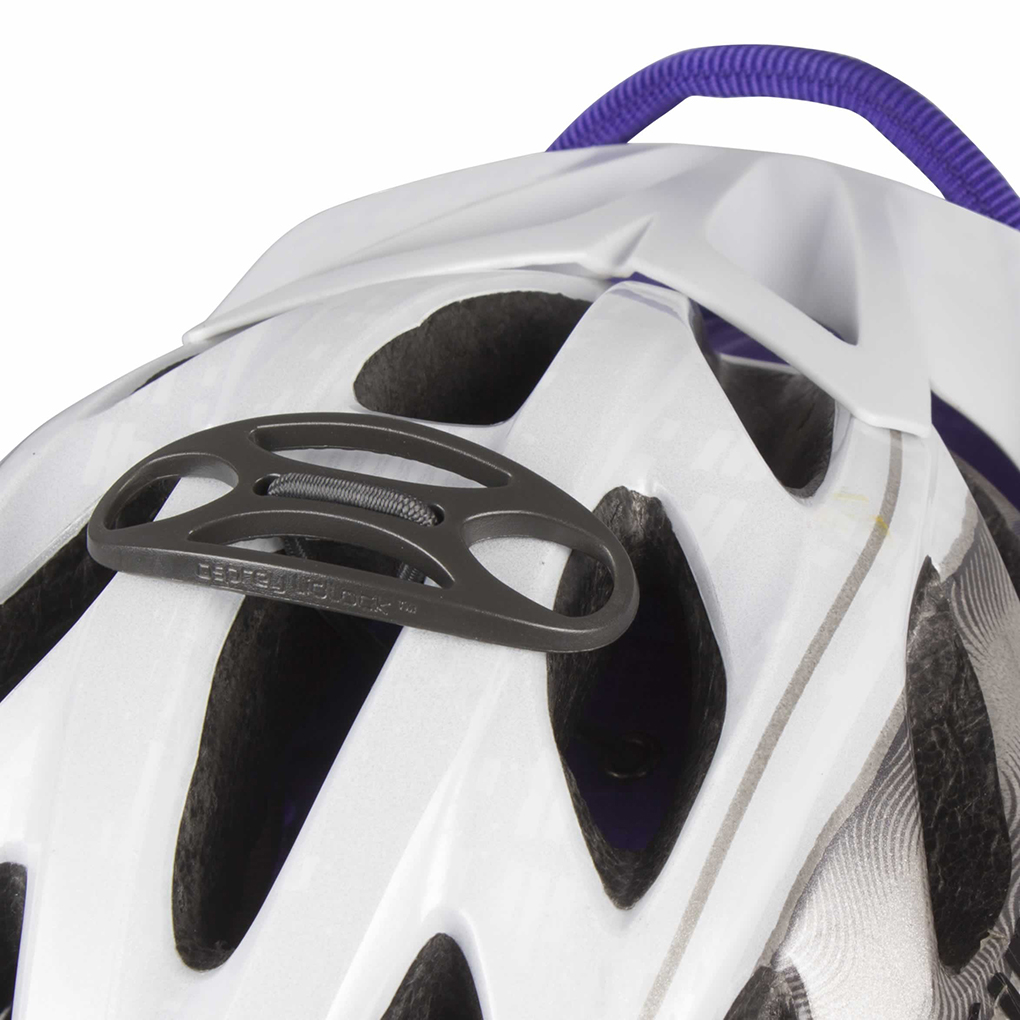
Osprey Raven 10 Hydration Pack
Specs:
Volume: 10 liters (610 cu. in)
Dimensions: 42 x 22 x 20 cm (17 x 9 x 8 in)
Stated Weight: 0.58 kg
Water reservoir: 3 liters
Size: one size (14-18 in)
MSRP: $119.95
Notable Features:
- LidLock
- Integrated tool pouch
- Magnetic bite valve and chest strap attachment
Reviewer: 5’2”, 120 lbs.
Days tested: about 30
Tested: all over Utah, Colorado and Arizona
The Osprey Raven 10 is a hydration pack designed specifically for mountain biking, and it has several key features that make it stand out as an exceptional riding pack.
The Raven comes in one size and is the women’s version of the Osprey Raptor pack that we reviewed a few seasons ago.
The Raven has a women’s-specific fit, but otherwise it is identical to the Raptor and comes in 6, 10, and 14-liter versions. (Throughout this review, I’ll talk a bit about the 6- and 14-liter versions of the Raven vs. the 10-liter Raven.)
After about a month of riding with the Raven 10, it has proven to be a very impressive pack.
Fit and Construction
I am 5’2”, so my torso is fairly short, but the Raven fits me well. It is very adjustable, so while the length would best fit someone who is a couple inches taller than me, I can cinch down the shoulder straps and waist and hip bands to keep the pack secure. The straps are also easy to adjust if you need to do so while riding.
Although it fits well, the Raven can still bounce around a bit, so I often tighten the chest and waist straps before techy, fast descents.

I would love to ride without a pack all the time—having 10 lbs. on my back to throw off my balance never makes for optimal riding. But a pack is necessary for most of the trail riding that I do, so it is a very good thing that the Raven is actually quite comfortable, and it is probably the least-encumbering pack I have used.
The Raven’s “biostretch” shoulder straps are slightly padded and, yes, stretchy. The hip belt is wide around the hips for support (and has pockets for on-the-go snacks). These features help make the pack comfortable and forgiving through fast, rocky sections of trail.
The “airscape backpanel” combines a firm panel with ergonomic foam and a raised mesh layer. The design works fairly well, allowing adequate airflow without unwanted weight.
Storage and Pockets
So far, I have taken the Raven 10 on rides lasting 1.5 – 6 hours, and haven’t had any trouble fitting everything I need.
On long rides I carry 3 liters of water, food, an extra layer or two, tool kit, small med kit, keys, and a phone. This all fits nicely into the Raven 10.
The Raven 6 would be too small for all-day adventure rides, and so far, I haven’t found the extra space of the Raven 14 to be necessary. But if you like to be prepared for anything at all times, the 14 is probably the way to go.
The Raven has a compartment design that features enough pockets—and not too many. The large main compartment supplies most of the volume of the pack. But this large pocket doesn’t turn into a black hole of gear thanks to integrated mesh organizational dividers. I keep food and pumps in these dividers, and extra clothing in the main area.

A small “slash” pocket located on the top exterior of the pack is perfect for a phone or other small items that need to be easily accessible and secure.
The exterior front stretch mesh pocket allows for increased storage if needed, and is closed with a buckle. This pocket has come in handy for stashing a rain jacket on long rides.
An integrated removable tool pocket at the bottom of the bag helps keep tools organized and accessible. I love this feature—tools are heavy, so I want to keep them in place and at the bottom of my pack.
The external zipper and rollout organizer helps avoid frustrating searches in the depths of a pack that usually results in everything I am carrying being scattered around the trail. I keep a tube, small pump, tire lever, multi-tool, derailleur hanger, Powerlink, and other small repair parts neatly organized in this pouch.
(Note: the Raven 6 does not have this tool pouch, it does include a small roll up tool organizer, but doesn’t have the built in pocket and pouch system like the Raven 10 and 14).

Hydraulic System
The hydraulic system of the Raven—and all Osprey mtb packs for that matter—is amazing.
The bladder has a firm backing that helps maintain the shape of the pack and prevents the bladder from sliding down when it is not full. The bladder has its own pocket that is accessed with a full-length zipper that houses the hose and goes over the right shoulder. This negates any need to secure the hose over your shoulder with small straps.
The bite valve can be turned off and on with a quick rotation. But unlike the Camelbak bite valves I have used, Osprey’s doesn’t leak easily so there is no need to mess with it while riding.
And the best part is the magnetic connection between the bite valve and chest strap. This extremely simple contraption keeps the hose in a convenient place so it never gets in the way.
The only issue that I’ve had with this setup is with the durability of the shoulder hose compartment. The lightweight mesh tore in a small crash within a week of getting the pack. The damage is only cosmetic and most of the other material on the pack is more durable, so I don’t foresee tearing in important places being a problem.

Other Notable Features
Compression Strap: The lower compression strap is designed to help stabilize everything in the pack, and can be tightened whenever the pack isn’t full. I’ve found it to be placed a little too low on the Raven 10 to work well, and if I tighten it too much, it can cause objects in the pack to move higher and therefore shift around more while riding.
The Raven 14 has a slightly better system with upper and lower compression straps to even out the load.
LidLock System: The LidLock helmet attachment is a clip attached to a bungee cord that securely attaches any helmet with vents to the pack. It’s very easy to use, and doesn’t require buckling or cinching anything down. It’s very useful for keeping gear together, but that’s about the extent that I use it. I always ride with my helmet on my head, so I don’t know how well it works while riding.

Bottom line
The Osprey Raven 10 is a great women’s mountain-bike specific hydration pack. It is extremely functional and I have found that it does not hamper riding performance as much as most hydration packs. The Raven 10 is large enough for all day rides, but if you regularly bring lots of layers, the Raven 14 may be the better choice.

I use the Syncro 10 and my experience is very similar to yours. A great pack. Very good for hot climates.
I had some issues with it sliding up and bumping the back of my helmet on steeps and jumps, but through a lot of tweaking was able to resolve this issue.
The only other issue I have is the bladder lid can be very challenging to screw on due to the friction of the plastic retainer. It’s hit and miss.
The 3L reservoir has been great for bigger rides in high mountains (I’m from sea level) as the elevation pulls a lot of water out of me. And the 10 size is just a touch small for all day for me and my food requirements.
I’m in California, so I removed the rainfly and put my tools there for easier access and lower CoG.
I’ve had 1-2 years with it without issue.
I’m a fan.